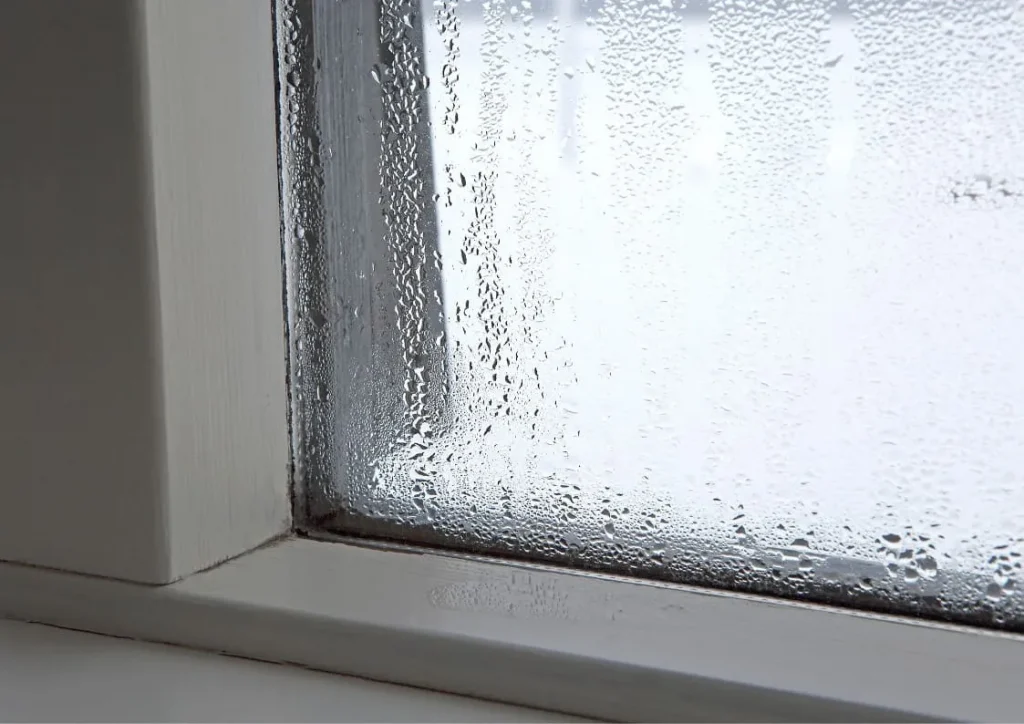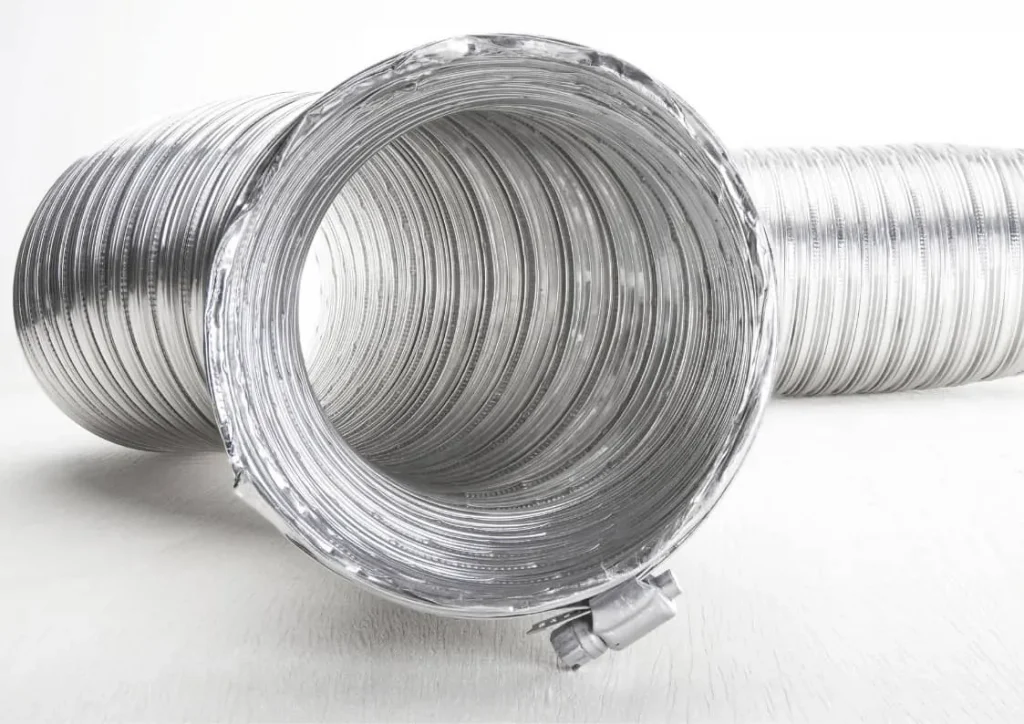Doing laundry is one of the most hated household chores (in a three-way tie along with dishwashing and toilet cleaning!) which isn’t helped by the fact the laundry room itself can become suffocatingly hot and humid.
But is this extreme level of humidity just a normal part of cleaning clothes with the help of a dryer? Or does it actually indicate a problem with one of your appliances?
Mixing damp clothes straight from the washer with hot air from the clothes dryer produces a lot of humidity. If the dryer is working correctly, the humid air should be blasted out of the vent system as the clothes are dried. A dryer that is not venting moist air to the outdoors can cause heat and humidity to build within the laundry room.
A dryer by its very nature generates hot moist air when operating, so straight away is not unusual for the laundry room to feel a little warmer than other rooms in the house while it is running. This side effect is similar to how the kitchen becomes warmer when the oven is on and heats the room a few degrees higher than the rest of the home.
Another consideration is the environment where you live. The laundry room will naturally be warmer and more humid if you live in a humid climate. Still, too much humidity or heat in the laundry room, no matter the weather or temperature, can be a cause for concern.
So how much humidity is too much for a laundry room? We have included everything you need to know in this wee guide to conquer laundry room humidity. Keep reading to find out:
- Why is your laundry room might be overly humid?
- Is my dryer vent the causing even higher humidity in my laundry room?

Why does the humidity get sky high in a laundry room?
An unusual amount of humidity in a laundry room is often due to a faulty dryer. But, before you blame your appliance for the hiked humidity, and rush out to repair or replace it, let’s make sure it really is to blame.
The temperature and humidity in your laundry room should not be significantly increased by running the clothes dryer. If you’re unsure whether the dryer is to blame or another issue, you can ask a couple of questions.
Is the room more humid during certain seasons? The climate and weather in the summertime (or late spring and early fall) include heat and humidity. If the laundry room is only hot and humid during the warmest months of the year, it’s unlikely that the dryer is to blame. Try using a dehumidifier or opening a window while the dryer is in use to help lessen the humidity in the room.
If you run the dryer and then turn it off and let it cool down, does the humidity and temperature in the room fall? If you answered yes, the dryer is likely the source of your problem.
A dryer that does produce too much humidity in the room might have a faulty vent. The good news is that it is often easy to fix a dryer vent once the problem is identified.

What is a dryer vent?
When you look at the back of the dryer, you’ll notice a long, flexible hose that connects to the dryer’s back. The hose’s other end is attached to a vent on the side of the home.
Most vents include a length of pipe that connects to the hose on your dryer. This pipe sticks out of the side or back of the house and directs the hot air outside. By placing your palm under the vent on the outside of the house while the dryer is running, you can feel the hot air pouring out.
If you are experiencing humidity and heat in your laundry room, the first thing to do is ensure the dryer vent is installed and working correctly.
Is your dryer vent causing high humidity in the laundry room?
To determine if the humidity in your laundry room is most likely coming from a faulty or clogged dryer vent, take a look at the following questions. If you can answer yes to any of them, the humidity is probably a dryer vent issue.
- Is there excessive heat? Do your garments seem to be getting hotter than usual? The hot airflow out of the appliance may be obstructed by a clogged vent. This can cause the dryer and everything inside to overheat.
- Is there excess moisture? The dryer vent does more than just allow hot air to escape. It also aids in the removal of water. When you open the dryer without appropriate ventilation, it may appear steamy.
- Are your clothes still wet? After the dryer cycle ends, are your clothes hot but still damp? Your dryer may take longer to dry your garments because of the increased humidity caused by a clogged or faulty vent.
- Are the drying cycles taking an unusually long time? Is it taking you hours to completely dry your clothes? If the dryer is heating and tumbling but still not getting the clothes dry, it is probably the vent.
When the dryer vent is not performing up to par, it is usually due to a clogged vent or the vent is not installed correctly.
Dryer vent installation
Dryer vents are frequently constructed of flexible plastic or metal tubing prone to kinking or crushing when it exits the dryer and enters the wall or floor.
Make sure the tubing is straight and does not obstruct the airflow. Some screws and brackets hold the tubing to the dryer and the pipe that vents outside. Ensure the dryer vent is installed correctly and that the tubing and pipes are secure and do not allow air to escape.
Clogged dryer vent
You clean the lint trap regularly, but that is not the only thing that can get clogged with lint and dust? Sometimes, the dryer vent tubing can be blocked with lint as well.
It’s essential to remedy this situation quickly because a dryer vent that is not performing correctly and is clogged can be a fire hazard. Dryer dust, fiber, and lint are responsible for 26% of dryer fires, according to the National Fire Protection Agency (NFPA).
To determine if a clogged vent is the issue, go outside while the dryer is running and feel for warm, blowing air at the vent’s exit. If you feel any air or if the air is just trickling out, the appliance’s duct is most likely blocked. This, yet again, poses a fire hazard. An appliance specialist may examine the dryer, clear the clog, and clean the vent pipe in its entirety.
Take home message
A hot, humid laundry room adds extra discomfort to the already dreaded household chore. But do not worry! The problem is usually easy to fix, and you are not destined to be hot and sticky while cleaning your clothing.
If the weather or climate causes the humidity, simple fixes such as dehumidifiers and opening windows can assist.
If the dryer is the source of the problem, there are often simple solutions. A common solution is double-checking that the dryer vent fits correctly. Also, make sure the vent tubing is not clogged, causing the hot air to get trapped inside your home.
